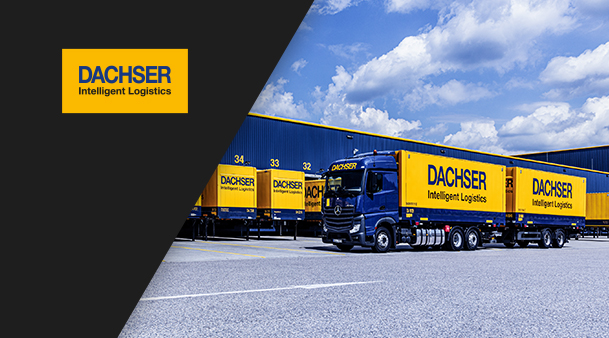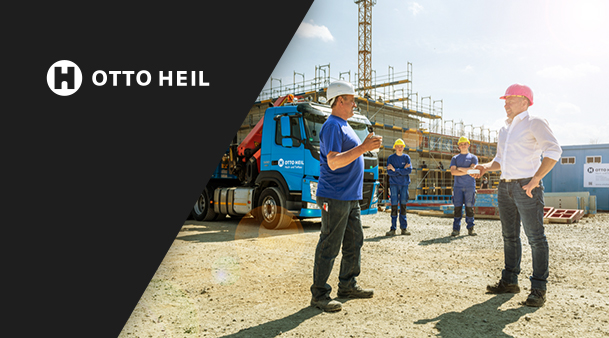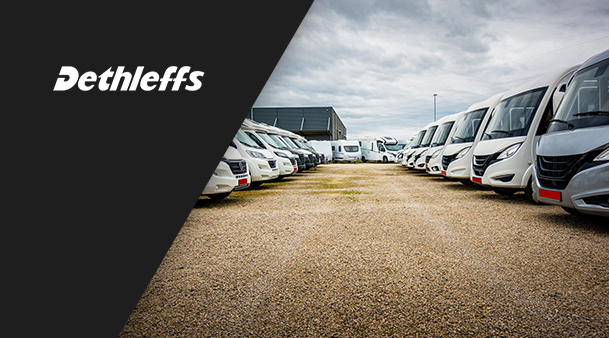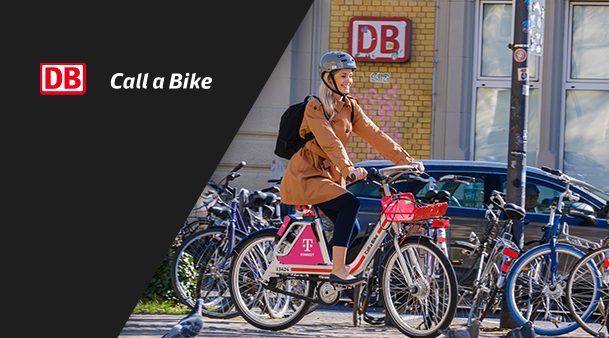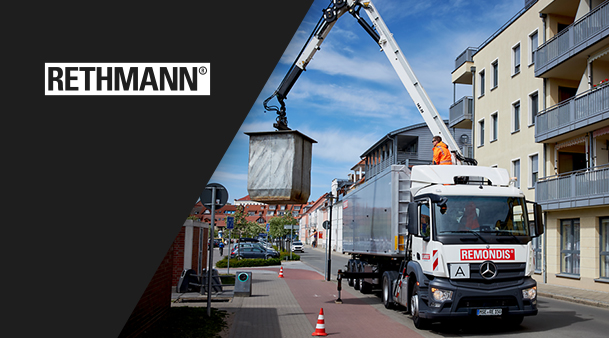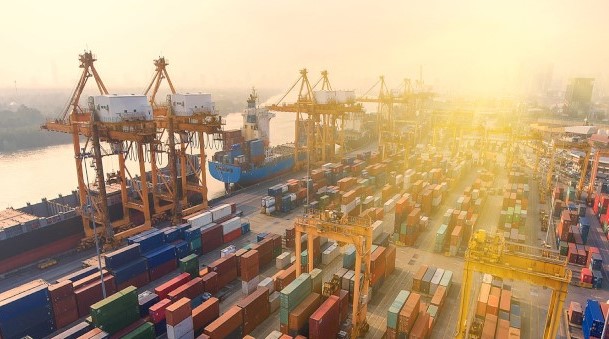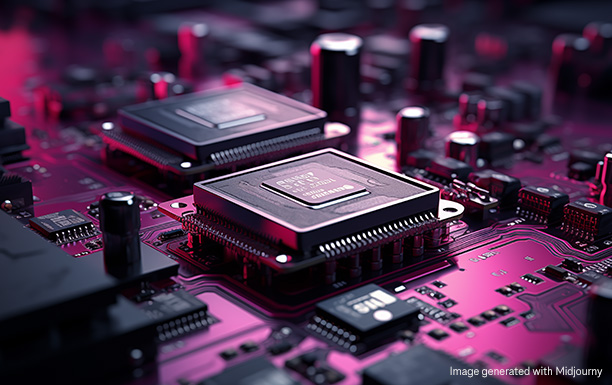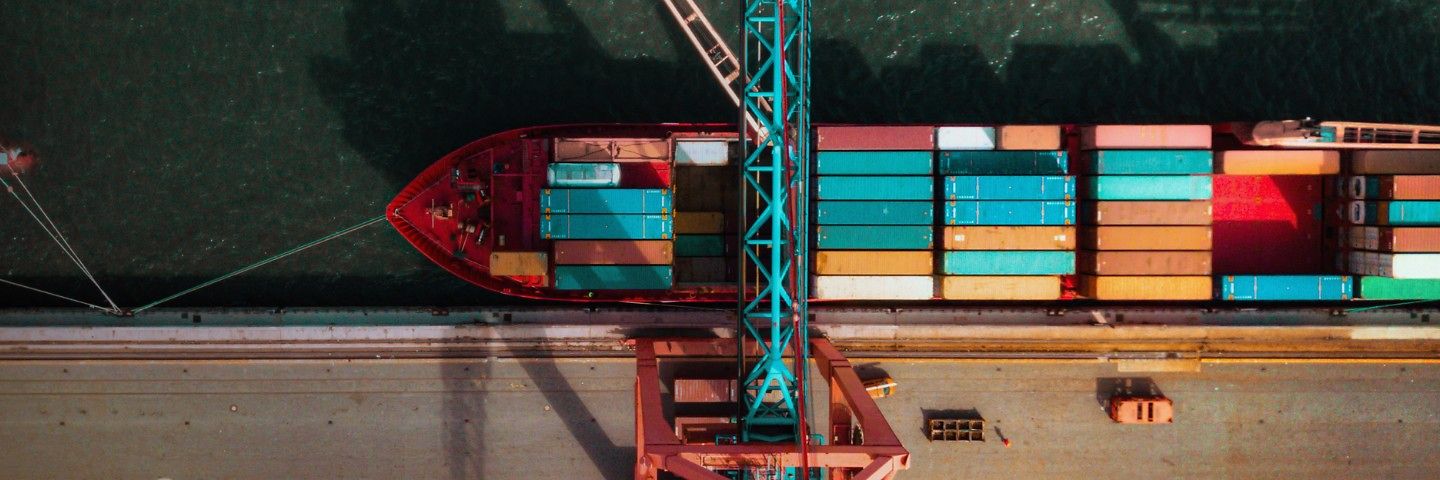


Use case: Localization refers to determining the exact position or geographic location of objects, especially movable and often non-powered assets such as containers and roll cages, and transmitting this information electronically.
Challenge: Companies need to know the location of materials and goods at all times, particularly in warehouse management and inventory of shared or rented assets like tools, machinery, and vehicles. Without precise tracking, time-consuming searches and inefficient use lead to higher labor costs and delays. Finding specific containers on third-party premises often causes delays and additional costs.
Solution: Deutsche Telekom’s IoT Track and Trace service enables accurate and continuous tracking of assets. Depending on customer requirements, various tracking technologies (GPS, WLAN, Bluetooth, cellular) with different levels of precision are used. Whether for outdoor or indoor use, on-site or on the go, our localization solutions offer a suitable tracker for every IoT project. The collected data is transmitted to the cloud, and the position is displayed on a web portal (map view). Additionally, position data can be accessed via a REST API.
Your benefits: The specific benefits include increased transparency (finding instead of searching), improved efficiency, process optimization, cost reduction, time savings, optimal asset utilization, and reduced asset loss.
Use case: Geofencing refers to a virtual boundary on a map. With the IoT Track and Trace service, it is possible to detect whether an object is inside or outside a geofence. When an object enters or exits a geofence, a notification is generated. This allows for early detection of events such as the arrival of a delivery or an asset being in an unauthorized location.
Challenge: Production inefficiencies caused by material shortages or delays, manual billing, and inefficient collection of loaned items, as well as theft and loss of assets, or unauthorized removal of machinery from construction sites, pose significant challenges.
Solution: IoT Track and Trace offers an efficient solution for capturing location data and enables the creation of virtual boundaries on digital maps. Automated notifications are triggered when an object crosses a geofence. The web portal provides an overview of assets within the geofences in a map view, and location data as well as geofence alerts can be accessed via a REST API.
Your benefits: This solution significantly enhances transparency, as the exact position of assets is always known, and unwanted location changes are immediately detected. At the same time, security is improved through theft prevention and the timely detection of material shortages.
Use case: Motion detection monitors the movement of assets and transmits the new position. Depending on the need, the position is updated either only at the start and stop of movement or regularly as long as the defined movement continues.
Challenge: Companies face the challenge of optimizing transport costs and delivery processes, which is hindered by unclear transport routes. Unauthorized movements, theft, and loss of assets often go unnoticed. Additionally, motion detection is needed for process automation to ensure the next process step is triggered once an asset is moved from Room A to Room B.
Solution: Our IoT Track and Trace services enable the capture of motion data using vibration sensors and location tracking. This data is transmitted to a cloud application, and automated notifications are generated for critical or unauthorized movements. The position and motion data are displayed on a web portal (map view) and can be accessed via a REST API.
Your benefits: Automatic motion detection provides significant transparency as unauthorized movements are immediately detected. This leads to increased efficiency and cost reduction through optimized transport and delivery processes, as well as improved theft protection.
Use case: Track and monitor conditions and changes in conditions, as well as compliance with thresholds for over- and under-ranges. Monitor key parameters such as temperature, humidity, shock, free fall, and tilting during transport or at the site.
Challenge: Sensitive goods can suffer damage or spoil during transport. Additionally, environmental requirements, such as cooling in warehouses or operations, may not be met, leading to further damage.
Solution: The IoT Track and Trace applications of Deutsche Telekom allow for the capture of condition data. Depending on customer requirements, various trackers with different sensors (temperature, humidity, shock, etc.) are used. This data is transmitted to the cloud, and automated notifications are generated for critical or unwanted conditions. The position and condition data are displayed on a web portal (map view) and can be accessed via a REST API.
Your benefits: Automated monitoring replaces manual and error-prone tracking of environmental conditions. You receive notifications for critical conditions, allowing you to detect quality issues early. This leads to increased efficiency and cost reduction, while improving reliability.
Use Case: The operating time counter in tracking solutions records the total duration for which the monitored asset has been active, such as being in motion.
Challenge: Companies need to plan maintenance cycles and activities to ensure systems function properly and minimize downtime. Additionally, it is crucial to identify inactive assets to reduce acquisition and maintenance costs and enable pay-per-use billing.
Solution: IoT Track & Trace of Deutsche Telekom services enable the tracking of operating time for assets based on motion data and vibrations. This data is transmitted to a cloud application, where it is analyzed and used to plan maintenance cycles. The position and operating time of the assets are displayed in the web portal and can be accessed via a REST API.
Your benefits: By monitoring operating time, you can efficiently plan maintenance cycles, ensuring the functionality of your systems and minimizing downtime. The solution provides transparency on asset utilization, helping you identify idle assets and reduce acquisition and maintenance costs.
Use case: Remote transparency over the consumption and fill levels of containers offers many advantages. For example, in the waste management industry, collection cycles for emptying containers can be significantly optimized through smart fill level monitoring.
Challenge: Companies in the waste management industry face the challenge of designing efficient collection cycles and avoiding empty runs. Without accurate fill level data, containers are often emptied based on assumptions, which is inefficient and costly. A lack of transparency over fill levels also leads to irregular collection and potentially overflowing containers.
Solution: The smart fill level monitoring of Deutsche Telekom allows for the installation of robust sensors in existing containers. These sensors continuously measure the fill level and send notifications when individually set thresholds are reached. The solution includes hardware, connectivity, cloud services, and support/helpdesk. Data is provided through an API interface for integration with internal systems.
Your benefits: You gain remote transparency over the fill levels of your containers, enabling the planning of demand-based collection cycles. This leads to optimized collection schedules and avoids empty runs, thereby reducing both costs and CO2 emissions.
It depends on the tracking technology. Pure short-range trackers that rely solely on RFID, BLE, UWB, or NFC typically do not have their own internet access, meaning the infrastructure must be connected to the internet. GPS and Wi-Fi trackers, on the other hand, have their own internet access via cellular networks. In poorly covered areas, temporary storage can buffer location data until it can be transmitted.
This varies by model. Some trackers have built-in batteries that can only be replaced by the manufacturer. Others use rechargeable batteries, while some models operate on user-replaceable batteries.
This depends largely on the tracking technology used. Short-range tracking technologies like BLE, UWB, NFC, and RFID require dedicated infrastructure. However, the following technologies can work without additional infrastructure:
Wi-Fi tracking primarily utilizes existing urban infrastructure.
GPS is infrastructure-independent since it uses global satellites.
The accuracy of positioning depends on the local conditions. The following accuracy levels can be achieved with each technology:
UWB, NFC, RFID, BLE: <1m
GPS: 5-10m
Wi-Fi: up to 10m
A tracking device is a battery-powered unit that regularly transmits its location to a cloud application. It is attached to objects, tools, or goods whose precise location is critical within a work process. The purpose of a tracking device is to reduce costs and increase efficiency. For example, it can significantly shorten the time needed to locate a specific item or optimize the route between multiple assets.
A GPS tracker uses the Global Positioning System (GPS) to determine the exact location. The device receives signals from GPS satellites and analyzes them to identify the position. The tracker regularly sends its location to a cloud service, such as a website or app, where the most recent position can be accessed.
The energy consumption of a tracker primarily depends on the frequency of positioning and transmission attempts, as each attempt consumes energy. The more optimal the conditions for tracking and transmission, the lower the tracker’s energy consumption. For example, GPS tracking uses more energy than Wi-Fi tracking. Particularly energy-intensive are unsuccessful GPS attempts, such as when trying to locate a position indoors.
The choice of tracking technology depends heavily on specific requirements and use cases. BLE (Bluetooth Low Energy) is ideal for cost-effective indoor tracking of large volumes of assets, Wi-Fi provides good coverage in urban and indoor environments, and GPS is the best choice for precise outdoor tracking. Many trackers, such as the low-cost tracker, incorporate multiple tracking technologies to deliver the best possible results in various scenarios.
